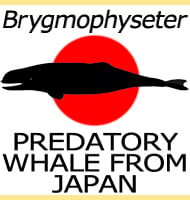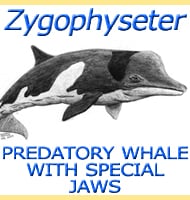Nanokogia
In Depth Nanokogia seems to have been much like modern day pygmy sperm whales of the Kogia genus. This is reflected in the genus name which basically means ‘Small Kogia’. One difference however is that Nanokogia seems to have lacked teeth in the upper jaw, which may be a reflection of a specific prey specialisation. … Read more

